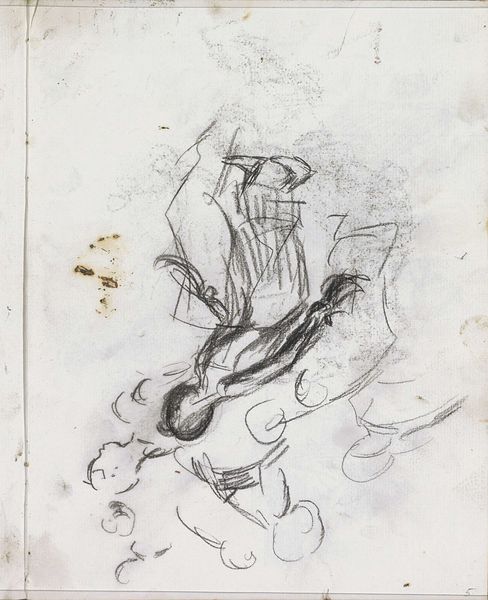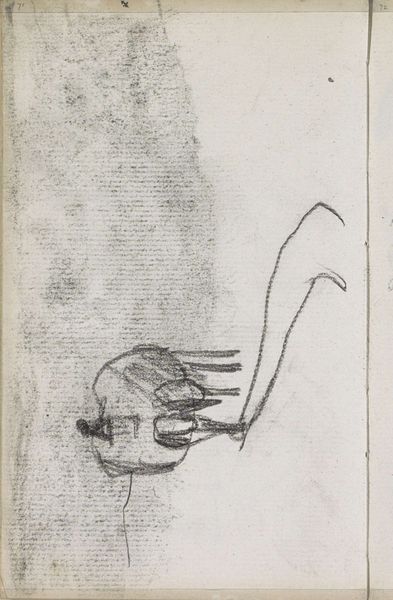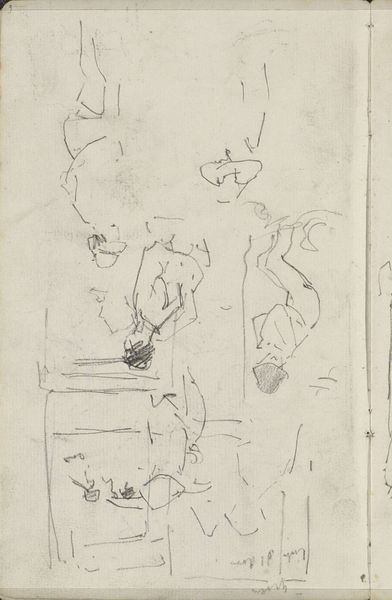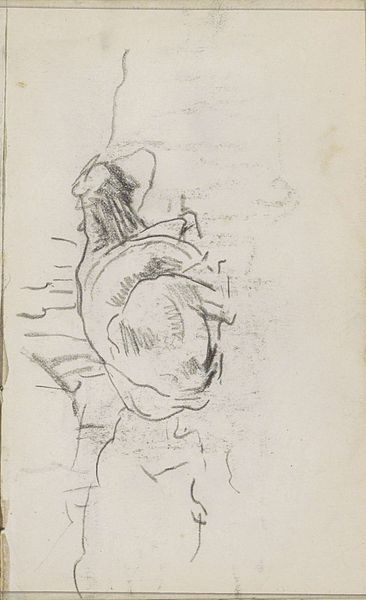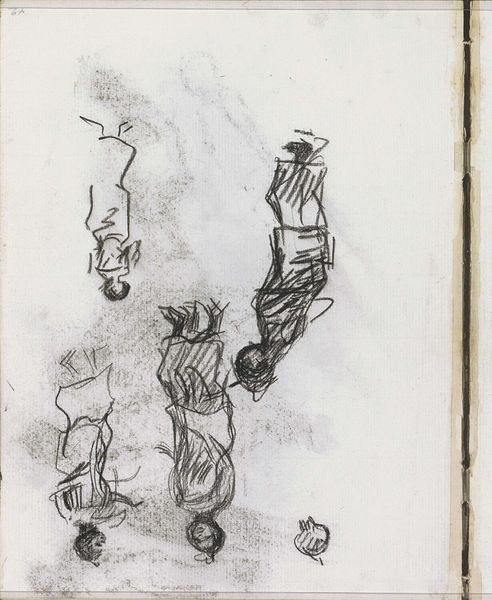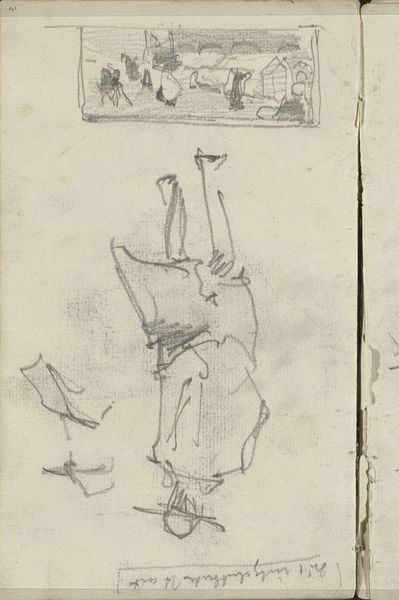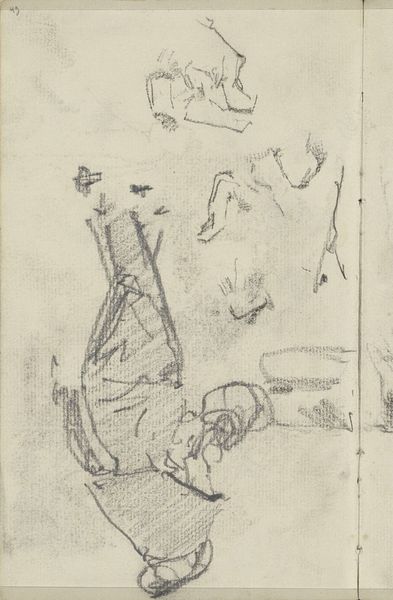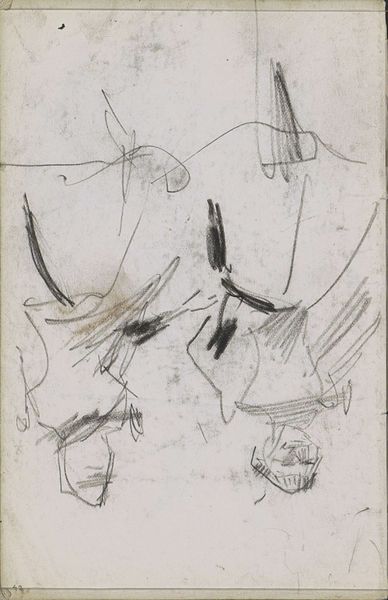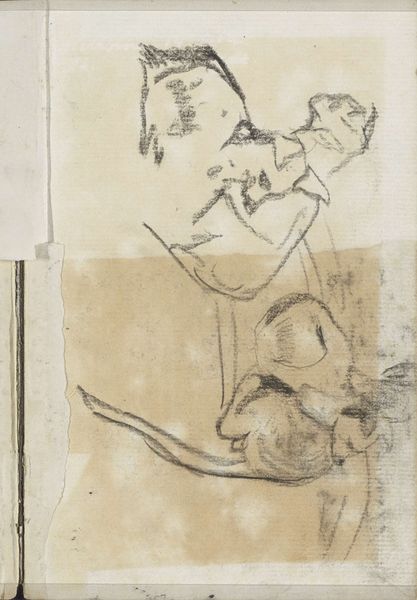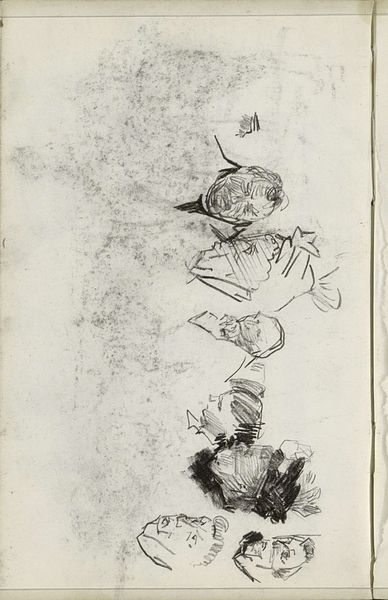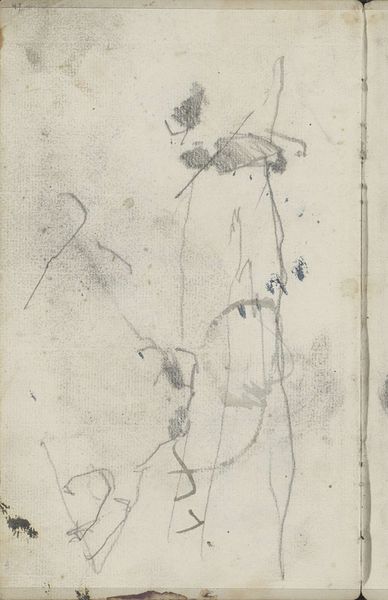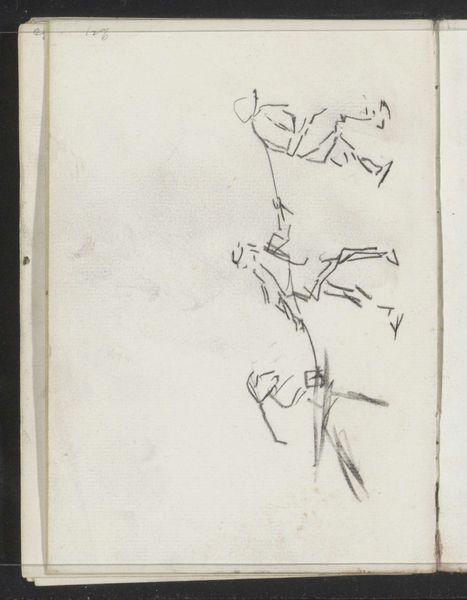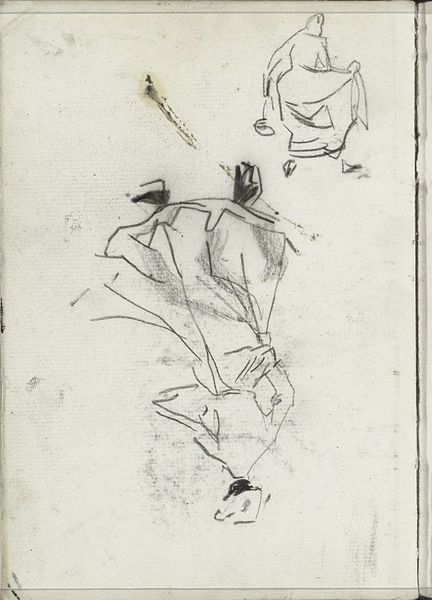
drawing, pencil
#
portrait
#
drawing
#
amateur sketch
#
light pencil work
#
pencil sketch
#
incomplete sketchy
#
figuration
#
personal sketchbook
#
detailed observational sketch
#
pencil
#
sketchbook drawing
#
sketchbook art
#
fantasy sketch
#
initial sketch
Copyright: Rijks Museum: Open Domain
Editor: This is "Afrikaanse figuren, mogelijk dansers," or "African figures, possibly dancers," by Isaac Israels, made sometime between 1875 and 1934, using pencil. It's a sketch, almost like a quick study, and the figures seem to be in motion. I find it quite gestural. What catches your eye in this work? Curator: The sketch's historical context is incredibly important. Israels, though Dutch, participated in a broader European fascination with non-Western cultures. What do you think it meant to depict "African figures," especially potentially dancers, during this period? Editor: Well, I suppose there's a sense of exoticism. Was it seen as capturing something "authentic" or "primitive," compared to European culture? Curator: Exactly! This period coincided with European colonialism. These sketches could reflect a romanticized, yet often inaccurate and power-laden, view of African cultures. Were these dancers he observed directly, or were these images inspired by photographs and popular imagination? Editor: That's a really good question! I hadn't considered how much that impacts the meaning of the piece. So, its reception today would definitely be different. Curator: Precisely. Today, we examine such works through a lens of postcolonial criticism. How do institutions like the Rijksmuseum grapple with displaying these potentially problematic representations? Editor: That’s a really complex question. I imagine there’s a real emphasis on providing historical context. Highlighting, as you're doing, the biases that may have been present at the time of creation, for instance. Curator: Contextualization is crucial. The sketch itself might be technically proficient, but its cultural and historical implications demand a critical engagement from us as viewers. It is useful to constantly remind ourselves that the “gaze” of the artist shaped this work. Editor: That's so helpful, thank you! It gives me a whole new way of looking at it. It’s not just about the image itself, but also about how the image came to be and what it represents within the larger story of colonialism and cultural representation.
Comments
No comments
Be the first to comment and join the conversation on the ultimate creative platform.
